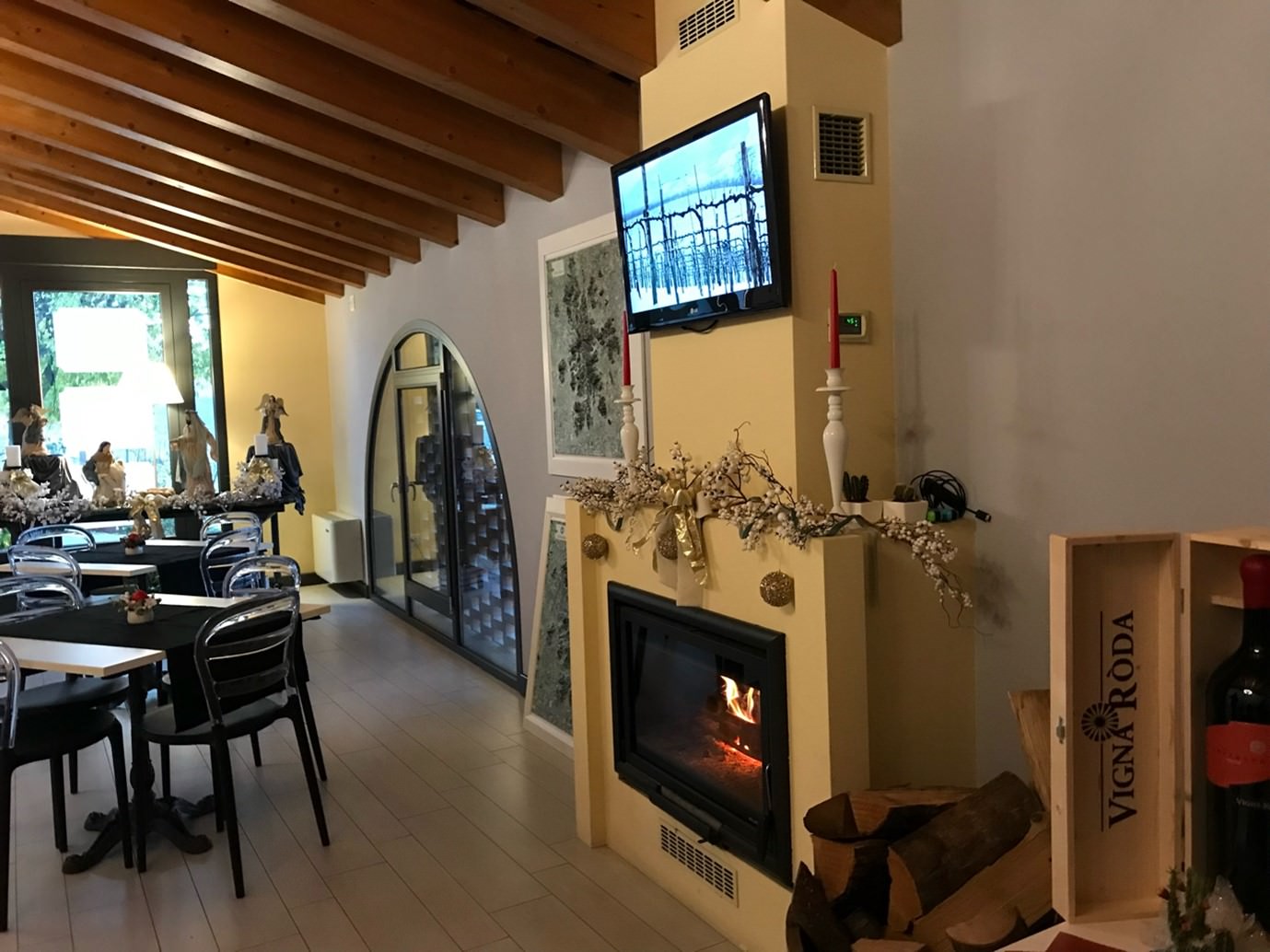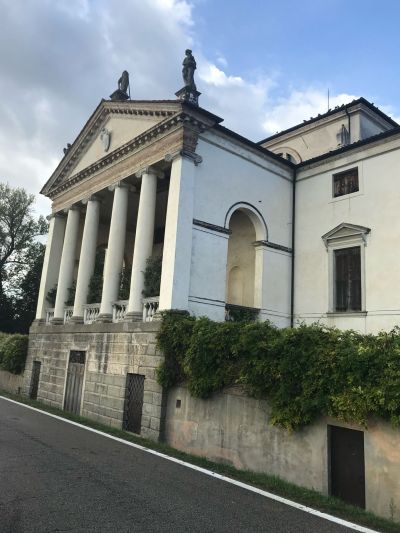In winter in the Veneto, the skies are often blue even though the air, coming down from the Dolomites, is glacial. We typically find indoor places to visit, preferably with log fires and a bit of wine tasting thrown in for good measure, and that’s exactly what we did last week.
We drove over the top of the hills to a vineyard on the other side, one that has been in the same family for many generations, but which is undergoing changes to make it organic and upgrade the quality
Vigna Roda is an extensive vineyard owned by the Strazzacappa family. They have the advantage of rich volcanic soils in a microclimate of a curved west-facing slope, and they are very welcoming in the middle of winter. We sat around the log fire chatting while sampling several of their prize-winning reds and Fior d’Arancio, a sparkling dessert wine. I made a mental note to return to help with the grape harvest because of its outstanding situation, (the sunsets are a knockout!) and their generous hospitality! (I know the traditional evening meal in the farmyard with all the grape pickers will be really special.)
There was mention of a nearby villa I had never heard of. It is amazing that after all the years I have lived here there are still new things to discover. We are in Palladio country and ‘my’ hills are dotted with many beautiful 500-year-old villas, but this one, only 5 miles from where we live, was not by Palladio, but his successor, Scamozzi.
Unless you are an architecture student, or have studied the Italian Renaissance, chances are you have never heard of Vincenzo Scamozzi. However, you probably have heard of Andrea della Gondola, better known as Palladio, considered to be one of the greatest architects who ever lived. The two men are, in fact, closely linked. Just as Palladio was reaching the end of his life, having constructed his masterpiece villas and the palazzi of Vicenza and having already designed and almost finished the magnificent Teatro Olimpico, the first theatre of the modern age, he died. Luckily our next hero was waiting in the wings.
We went to the Villa Molin the very next day. It was designed for a Venetian nobleman, Nicolo Molin, and completed in 1597. Perhaps it is because the original setting of pasture and orchards has now given way to the suburban sprawl of Padua that the villa is almost hidden in plain sight. There is a road which passes the classical front of the villa, so close that the steps to the porticoed entrance have had to be removed and you now have to use a side door to enter. Next to the road and parallel to it is the Battaglia Canal. This is at least in keeping with the original design. The noble Venetian family would travel by gondola to their mansion to avoid the summer heat of the city.
Nicolo Molin had been for a time the Ambassador to the Court of King James I of England, although he referred to the English as the three Bs: Beer, Bed and Beef! On his return, he planned a Palladian villa and then had turned to Scamozzi as his preferred architect after the death of Palladio in 1580.
The ground floor is stunning in its simplicity, with a vaulted ceiling and checkerboard floor. However, reaching the top of the stairs, the piano nobile takes your breath away. In complete contrast, the grand central space in the form of a Greek cross is frescoed with feigned architecture and illuminated from above with arched openings which also provide cross-draught ventilation in the summer heat.
Unlike the higher frescos in Palladio’s famous Villa Maser, where there is a trompe l’oeil balustrade, this one is real, providing access to bedrooms and servants’ quarters. Some of the original bedroom furniture was found in these upper rooms, still in good condition, so it was brought down for display. A magnificent bed now faces a wall of 19th century wardrobes, but they hold a secret. One of the doors opens onto a flight of stairs so that the servants could come and go unobserved by others in the main part of the villa.
It is amazing that the Villa Molin is not better known, considering the influence it had. It was visited by Sir John Soane, a great admirer of Scamozzi, who came from London in 1636. (His own superb collection is in the Soane Museum in London.) Another very important early visitor was Inigo Jones during his Grand Tour of Italy in 1613-1614. He, of course, went on to design the great buildings in Greenwich, claiming to have been inspired by the columns of the loggia of the Villa Molin.
This is an undiscovered jewel of the Veneto. We were lucky to see it without the crowds and enjoyed a guided tour with the owner who spoke perfect English. She does not live there, but at least it is in safe hands as she is an architect! We felt privileged to have seen such a hidden treasure.




